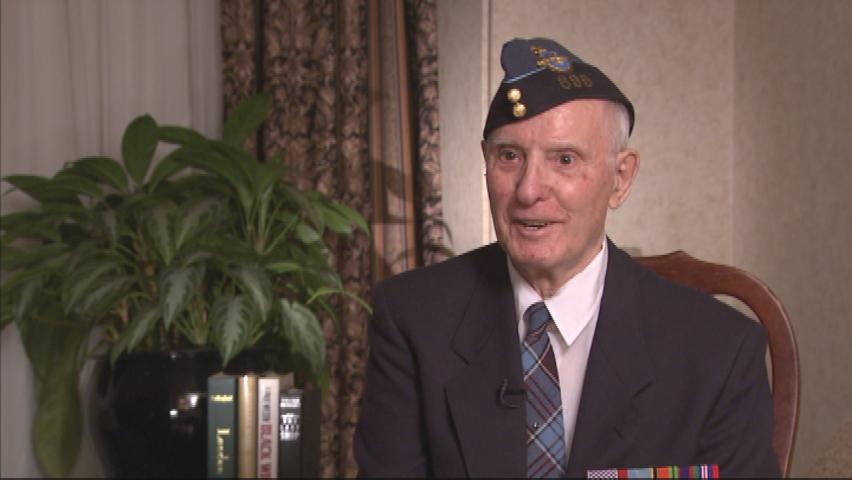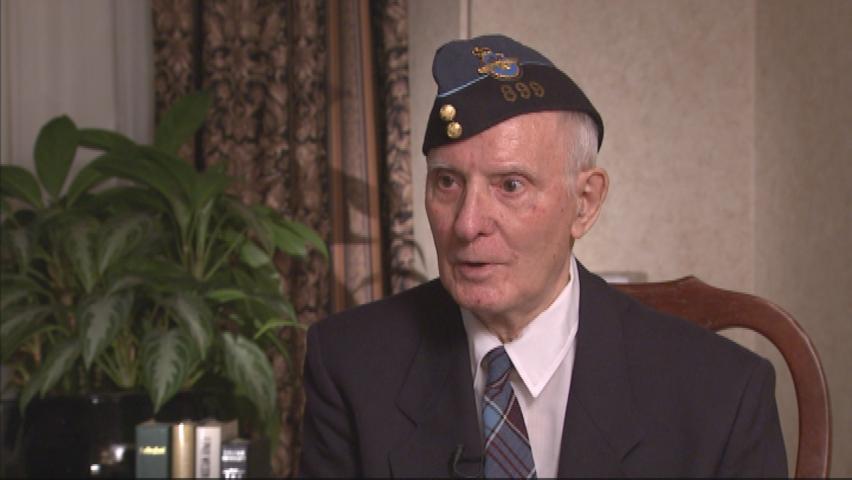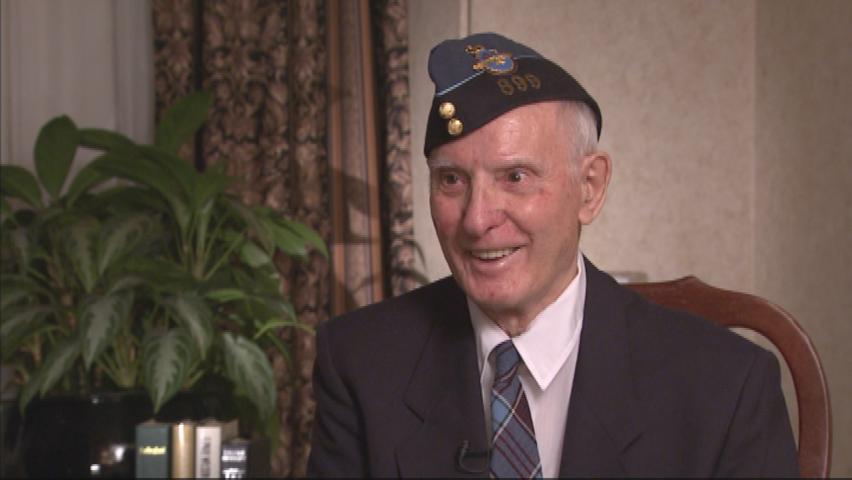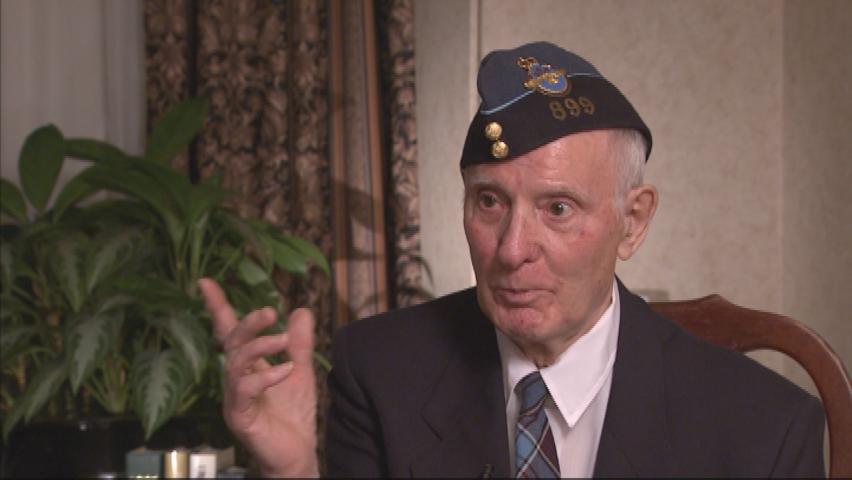Shrapnel From Enemy Aircraft
Heroes Remember
Shrapnel From Enemy Aircraft
Transcript
Description
Mr. Callas describes getting wounded by enemy fire and details how he and the crew reacted.
Charles Callas
Charles (Cal) Edgar Callas was born in Wainwright, Alberta, on February 24, 1924. He enlisted in Edmonton, Alberta, in late 1942 after completing grade 12. He completed basic training there and then enrolled in an SFTS (service flight training school) in Dauphin, Manitoba. Mr. Callas trained in Trenton, Ontario, and MacDonald, Manitoba, in bombing and gunnery, and joined the Royal Canadian Air Force (RCAF) Air Crew, 625 Squadron, 1 Bomber Command. He successfully completed 33 trips between March and July of 1944, and had achieved the rank of pilot officer when the war ended. He was presented with the Distinguished Flying Medal (DFM) in 1946 by the Governor General of Canada. He returned to Edmonton and married his fiancée Wynee Gould. They raised three children, and are proud of their seven grandchildren and three great-grandchildren. Mr. Callas celebrates 70 years with the Royal Canadian Legion this year, as well as long time memberships with the Canadian Air Search and Rescue Association (Air Division), the Royal Canadian Air Force Association and the Army Reserve..
Meta Data
- Medium:
- Video
- Owner:
- Veterans Affairs Canada
- Recorded:
- June 2, 2012
- Duration:
- 3:42
- Person Interviewed:
- Charles Callas
- War, Conflict or Mission:
- Second World War
- Location/Theatre:
- Germany
- Branch:
- Air Force
- Units/Ship:
- 625 Squadron
- Occupation:
- Mid Upper / Tail Gunner
Related Videos
- Date modified:






